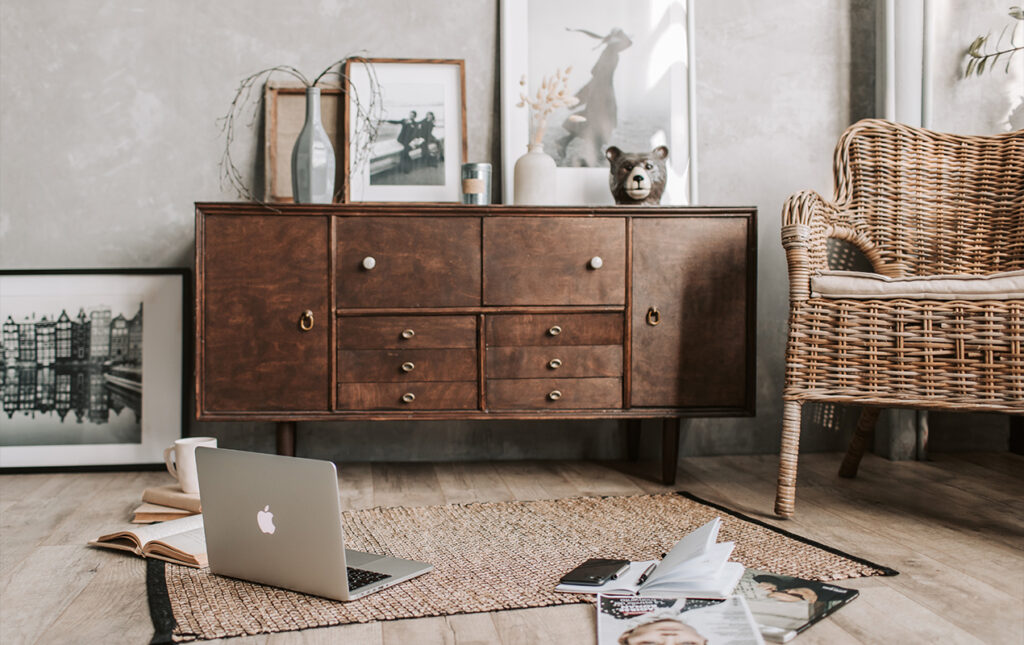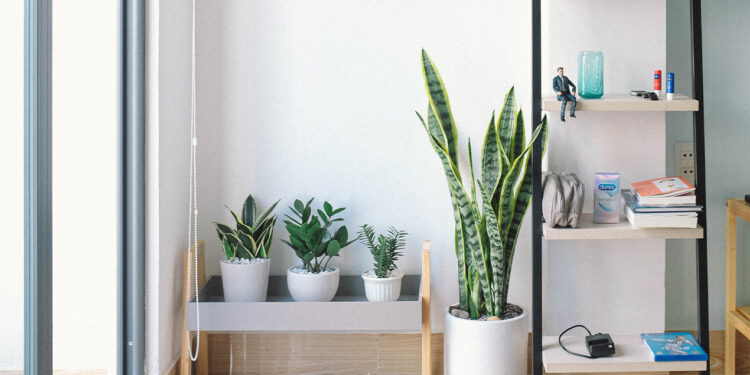In recent years, a phenomenon has been working its way through many homes and interior design concepts. The practice of creating indoor spaces that feel more connected to nature has been sweeping homes across the world, and is otherwise known as biophilic design.
We’ve put together this article to demonstrate some of the easy ways that you can bring some biophilic house design into your home, without having to embark on a large-scale remodel. Keep reading to learn more:
What Is Biophilic Design?
Biophilic home design is essentially the practice of incorporating natural, outdoor elements into your home space. It’s been touted as one of the more holistic interior design trends of recent years, with it considered to have benefits far beyond a simple visual reboot. People in biophilic homes and researchers are often quick to express the benefits that biophilia can have on one’s mental and physiological wellbeing, so it might be more than just a trend, it could be a real lifestyle choice!
Bring the Outdoors Inside With Plants
This might sound overly simplistic, but bringing some plant life into your home is one of the easiest, most effective ways to begin a biophilic design concept. This can be achieved by creating something as elaborate as an indoor vine feature or simply by bringing in some common house plants, such as spider plants, aloe vera, or cacti. Greenery is your friend and will provide you with some stunning decoration, along with real biophilic value for your health.
Not only can plants inside your home get rid of harmful toxins that build up over time, but it also gives you (quite literally) a breath of fresh air. Nature has a natural calming effect on the brain, helping reduce anxiety and promote serenity in your interior space.

Naturally Shaped Furniture & Decor
This is something of a biophilic trick, in that utilizing natural shapes and forms with your furniture and decor choices may not actually mean incorporating any truly natural elements, but it will still create the desired visual effect. This could be anything from a tall thin lamp, reminiscent of riverside reeds to a tree trunk coffee table, but either way, bringing in shapes and forms that remind you of the outside world is a great start to make on your biophilic interior design concept.
Other benefits of naturally shaped furniture and natural decor are its sturdiness and durability. For example, investing in a solid wood table or other wooden furniture ensures you gain maximum value and longevity from each piece. Your bank account will thank you later!
Make Use of Natural Light
We spend so much of our lives illuminated by harsh, manufactured light from bulbs, screens, and LEDs when the greatest source of light and life is sitting right up there in the sky for most of the day. Making better use of natural light in our homes is an easy way to get in touch with biophilia, be it through forgoing the use of blinds and curtains, setting up spaces around skylights, or blurring the lines between the indoors and outside with your patio or decking.

Think Colors!
Sometimes, all you need to reinvigorate your home is a simple coat of paint. Integrating more natural tones and colors into your home, through paint jobs, furniture choices, and simple decoration is an easy way to get some more biophilic value out of your spaces. Consider the blues of the sky and sea, the greens of the garden, and even the autumnal browns and deeper orange tones of the October forest, and feel free to switch it up between rooms and spaces!
Wood Is Your Friend
When it comes to the furniture that you can choose for a biophilic design concept, natural wood grains and tones are always a great choice. Wooden furniture with a natural grain to it does an excellent job of adding some welcome visual texture to spaces, while also giving you a window into the natural processes that make wood what it is. You can find this texture and atmosphere in everything from flooring to desks to wall panels – the wood is your oyster!
Consider Your Home’s Setting
The relentless “Scandification” of furniture has leveled the playing field for many, but it’s also created something of a disconnect between people, their homes, and the spaces that their homes occupy. When you’re picking out your furniture and decor choices, consider the area that your home sits within. If based in the desert, go for sandy tones that reflect the landscape, or if by water, take a more maritime approach, either way, let your setting be your guide in biophilia.
Final Thoughts
Creating a biophilic concept for your home can do wonders for your physical, mental, and emotional wellbeing, and the way to do it is to simply follow its most basic principles. Think about your setting, consider the natural elements that speak to you the most, and try to create sensory effects with your choices.
Biophilia is just as much about color, texture, and layout as it is about plants, so don’t feel the need to transform your home into some sort of suburban tundra. A wisely positioned desk in the right room of the house can do just as much as an array of living room perennials.
When integrating biophilic features into your home, you shouldn’t feel pressured to come up with all the ideas on your own, and the same goes with any aspect of interior design. Checking out a great design blog regularly is an amazing way to stay inspired and keep things fresh in your mind.





